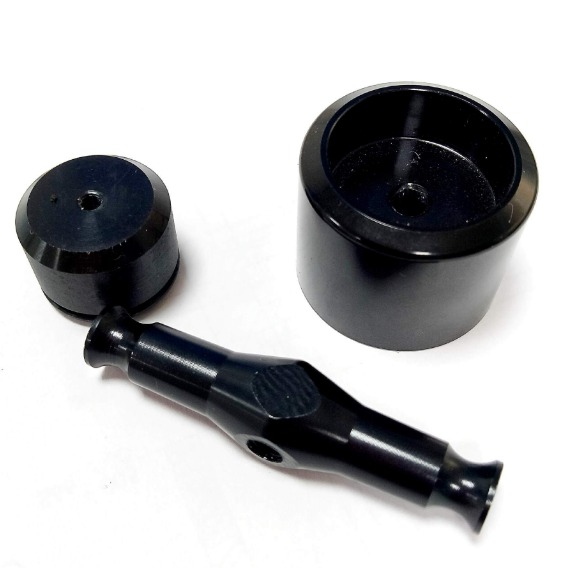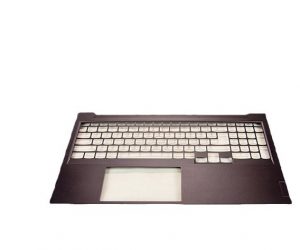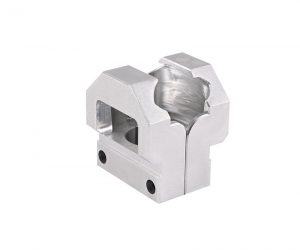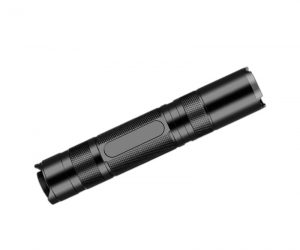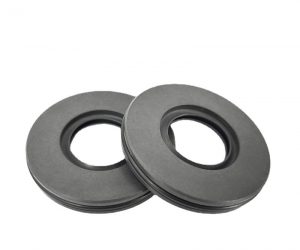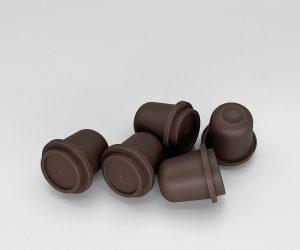The injection molding cycle is a series of sequential steps that occur during the injection molding process to produce plastic parts. This complete guide provides a detailed overview of each stage of the injection molding cycle, including material preparation, mold filling, cooling, mold opening, part ejection, and the overall process optimization.
Material Preparation: The injection molding cycle begins with material preparation. Plastic resin in the form of pellets or granules is fed into the hopper of the injection molding machine. The material is then transported into the barrel, where it is heated and melted to a molten state.
Mold Closing: Once the plastic material is melted, the mold is closed. The two halves of the mold, known as the cavity and the core, are brought together to form a complete mold cavity. The mold is securely closed to prevent any leakage of molten plastic during the injection process.
Injection: With the mold closed, the injection stage commences. The molten plastic is injected into the mold cavity under high pressure. This pressure ensures that the plastic fills the mold completely and takes on the desired shape of the part.
Holding Pressure and Cooling: After the mold cavity is filled, the injection molding machine applies holding pressure to pack the plastic material tightly and compensate for shrinkage as it cools. The cooling stage is crucial to solidify the plastic and shape the final part.
Cooling Time: The cooling time varies depending on the part's size, thickness, and material. Efficient cooling ensures that the plastic solidifies uniformly and without defects. Cooling channels within the mold facilitate the rapid transfer of heat from the molten plastic to the surrounding mold walls.
Mold Opening: Once the cooling time has elapsed, the mold is opened to reveal the molded part inside. The two halves of the mold are separated, and the part remains in the mold cavity.
Part Ejection: The part is ejected from the mold cavity during the ejection stage. Ejection pins or plates push the part out of the mold, and it is released onto a conveyor belt or collection area.
Mold Closing and Repeating the Cycle: After the part is ejected, the mold is closed again, and the injection molding cycle begins anew. The process repeats to produce multiple identical parts within a specified production run.
Process Optimization: Throughout the injection molding cycle, various parameters, such as injection speed, temperature, pressure, and cooling time, can be adjusted and optimized to achieve the desired part quality and production efficiency. Process optimization is crucial for minimizing defects, reducing cycle times, and maximizing production output.
In conclusion, the injection molding cycle is a well-defined sequence of stages that allows for the efficient production of plastic parts. Each step, from material preparation to mold closing, injection, cooling, mold opening, and part ejection, contributes to the overall success of the injection molding process. Proper process optimization and adherence to quality control measures ensure that manufacturers can consistently produce high-quality plastic components for various industries.
Injection molding is a common way to make plastic parts. It's a process where hot, melted plastic is shot into a mold and then cools down to harden into the shape we want. The whole cycle of injection molding includes closing the mold, injecting the plastic, letting it cool, and finally popping out the finished part.
This cycle has four main steps: clamping, injection, cooling, and ejection. Each step comes with its own set of challenges that can affect how good and fast the process is. Let's break down each step and share some tips on making the most of your injection molding process.
First up is the clamping stage. This is when the mold closes tightly to make sure the plastic fills all the nooks and crannies perfectly. How hard and fast you clamp can make or break your part. Too much pressure or speed could hurt the mold or cause overflow, while too little might not fill it enough. So, depending on the type of plastic and the design of the mold, you need to find the perfect balance.
Next is the injection stage, also known as filling the mold. Here, hot plastic is pushed into the mold by a machine. The speed, pressure, and temperature at which you do this are crucial. Fast injection means quicker filling, but the right pressure ensures the plastic moves smoothly. Keeping an eye on the temperature helps the plastic spread evenly. Again, tweak these settings based on your materials and mold for the best results.
Then comes the cooling phase, or curing time, where the plastic slowly cools and solidifies in the mold. How long it takes to cool and how quickly it cools can impact production speed and the quality of your parts. If it cools too slowly, it can slow down production. Too fast, and you might end up with stressed or deformed parts. Adjust the cooling time and rate according to your materials and mold for optimal outcomes.
Finally, there's the push-out stage, also called demoulding. At this point, the mold opens, and the now-solid plastic part is pushed out. The force and speed at which you push out the part are important. Too much force can warp or damage the part, while too little might leave it stuck in the mold. Like everything else, finding the right push-out force and speed depends on your specific materials and mold design.
In short, every step in the injection molding process has its own set of parameters that can either help or hinder the quality and efficiency of your production. By carefully adjusting these parameters during clamping, injection, cooling, and push-out, you can streamline your process and boost both productivity and product quality.
Clamping Stage
The clamping stage is the first stage of the injection molding cycle. It involves closing and locking the mold halves together to form a mold cavity. The mold halves are mounted on a movable platen and a fixed platen, which are controlled by a hydraulic or mechanical system. The clamping force is the amount of pressure applied by the platens to keep the mold closed during injection. The clamping force depends on the size and shape of the part, the type and viscosity of the plastic material, and the injection pressure.
The clamping stage is important for ensuring that the mold cavity is completely sealed and aligned, preventing any leakage or deformation of the plastic material. The clamping stage also affects the cycle time, as it determines how fast the mold can be opened and closed. A higher clamping force may increase the quality of the part, but also increase the wear and tear of the mold and the energy consumption of the machine.
Injection Stage
The injection stage is the second stage of the injection molding cycle. It involves injecting molten plastic into the mold cavity through a nozzle attached to an injection unit. The injection unit consists of a hopper, a barrel, a screw, a heater, and a hydraulic or electric motor. The plastic material is fed from the hopper into the barrel, where it is melted and mixed by the rotating screw. The screw then pushes the molten plastic through the nozzle into the mold cavity.
The injection stage is important for filling the mold cavity completely and evenly, avoiding any air pockets or voids in the part. The injection stage also affects the quality and appearance of the part, as it determines the flow rate, pressure, temperature, and viscosity of the molten plastic. A higher injection speed may reduce the cycle time and improve the surface finish of the part, but also increase the risk of flash or jetting. A higher injection pressure may improve the filling and packing of the part, but also increase the stress and shrinkage of the material.
Cooling Stage
The cooling stage is the third stage of the injection molding cycle. It involves cooling and solidifying the molten plastic in the mold cavity until it reaches a suitable temperature for ejection. The cooling stage is usually achieved by circulating a coolant (such as water or oil) through channels in or around the mold. The cooling stage is often considered as part of the holding phase, where additional pressure is applied to pack more material into the mold cavity and compensate for shrinkage.
The cooling stage is important for ensuring that the part has reached its final shape and dimensions, avoiding any warping or distortion during ejection. The cooling stage also affects the cycle time, as it determines how long the part has to stay in the mold before it can be ejected. A faster cooling rate may reduce the cycle time and improve the dimensional stability of the part, but also increase the residual stress and brittleness of the material.
Ejection Stage
The ejection stage is the fourth and final stage of the injection molding cycle. It involves opening
the mold halves and ejecting the part from the mold cavity using an ejector system. The ejector system consists of pins, blades, strippers, or air jets that push or pull the part out of the mold. The ejection stage is important for ensuring that the part is removed smoothly and safely from the mold, avoiding any damage or defects to the part or the mold.
The ejection stage also affects the cycle time, as it determines how fast the part can be ejected and how long the mold has to stay open before closing again. A faster ejection speed may reduce the cycle time and improve the productivity of the process, but also increase the risk of cracking or breaking the part.
How to Optimize the Injection Molding Cycle
The injection molding cycle is a key factor that affects the quality, efficiency, and cost of the injection molding process. By optimizing the injection molding cycle, one can achieve a higher output, a lower scrap rate, a better product quality, and a lower energy consumption. Some of the ways to optimize the injection molding cycle are:
- Choosing the right plastic material and mold design for the part requirements and specifications.
- Adjusting the clamping force, injection speed, injection pressure, holding pressure, cooling rate, and ejection speed according to the part geometry, size, and weight.
- Using a scientific molding approach to determine the optimal process parameters based on the material properties, mold characteristics, and machine capabilities.
- Implementing a preventive maintenance program to ensure the proper functioning and performance of
the injection molding machine and mold. Applying a quality control system to monitor and control the process variables and product characteristics.
Conclusion
The injection molding cycle is the time it takes to complete one injection molding operation, from closing the mold to opening it and ejecting the part. The injection molding cycle consists of four main stages: clamping, injection, cooling, and ejection.
Each stage has its own parameters and challenges that affect the quality and efficiency of the process. By understanding and optimizing the injection molding cycle, one can improve the productivity and profitability of the injection molding process.
